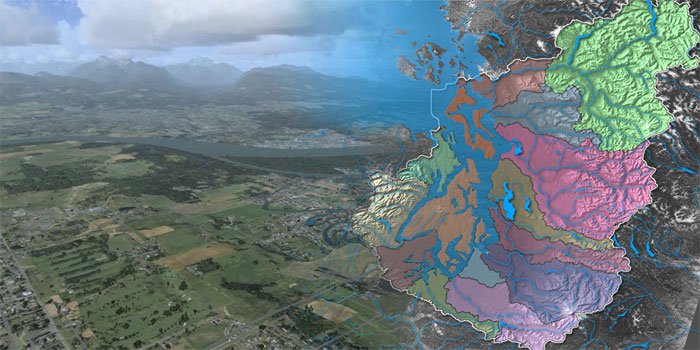Watersheds-To-Sea (W2S)

The distribution of water across the landscape and the life it supports represents one of the fundamental organizing principles of the earth surface.
The distribution of water across the landscape and the life it supports represents one of the fundamental organizing principles of the earth surface. Ecosystem ecology organizes the dynamic interplay of organisms and their environment, from a salmon to the exchange of carbon between vegetation and the atmosphere to the chemical changes in water as it moves through soil profiles and is transpired or moves into groundwater or surface water. The interactions of the physical, chemical and biological processes forming the quantity and quality of the freshwater that is ultimately delivered to the sea greatly influence terrestrial, freshwater and marine fate, while the ability to determine cause/effect in the marine environment is intimately tied to the source and movement of the materials on land. Understanding these interactions is particularly relevant both due to the previous and future expected (and potentially unexpected) changes in land-use and climate.
The scientific challenges to address W2S coupling and resolve the emerging environmental problems are particularly intriguing, as they include interactions and feedback between systems, with exchanges between land and the atmosphere, transfer from land over and through soil to rivers and lakes, downstream processing in rivers, and inputs from rivers to the sea. Against these physiochemical processes are the distributions of biotic resources and ultimately the direct and indirect impacts of humans. Further, humans are not distributed randomly across landscapes and the Puget region is expected to grow greater than 20% in population in the next 20 years. Income and net environmental impact per capita (i.e. square footage of homes and resource consumption) has also been increasing in the region. Rather, our distribution and activities often respond to variation in the �natural� processes described above, thereby generating a dynamic landscape that reorganizes over time scales ranging from those relevant to geologic processes to those relevant to social processes.